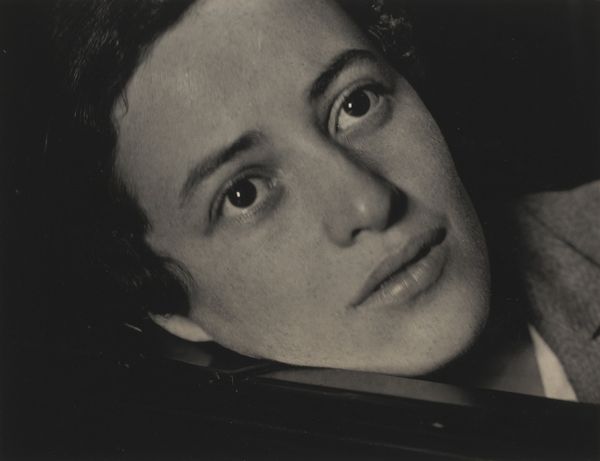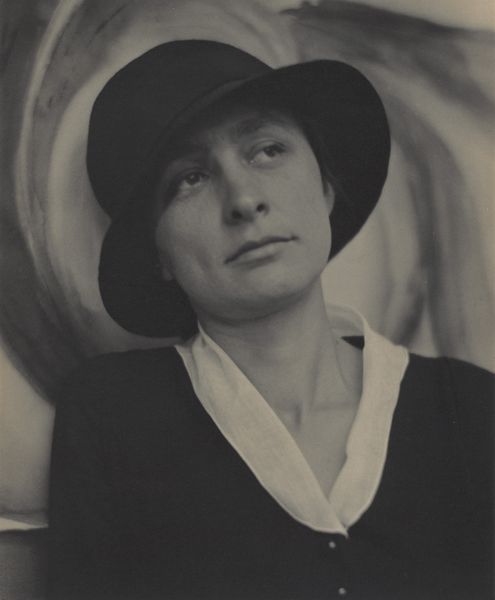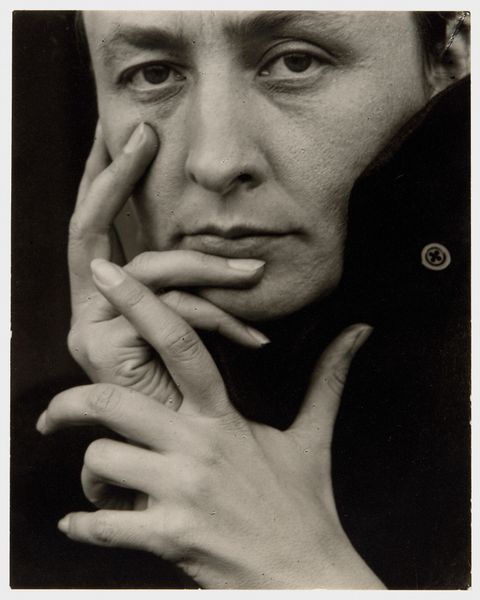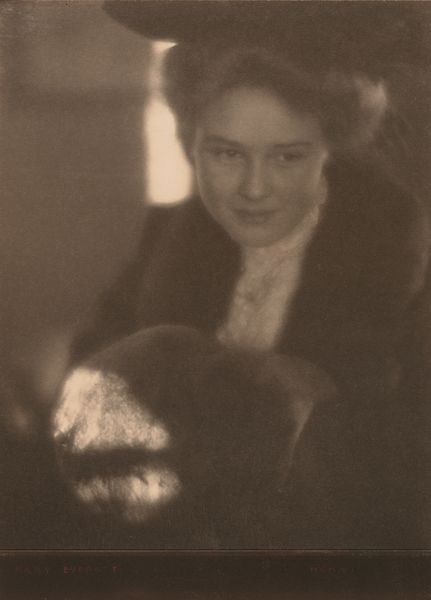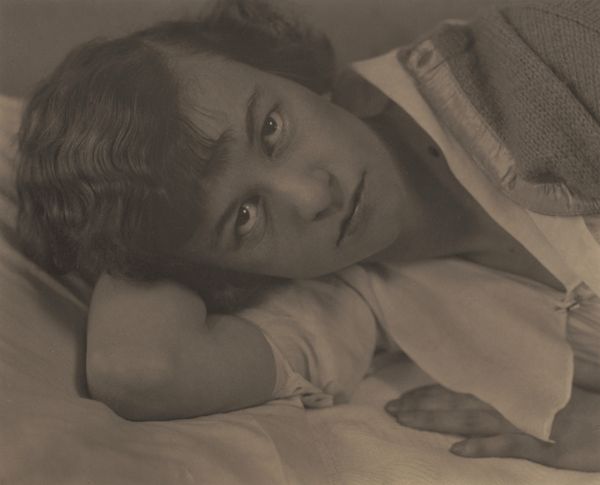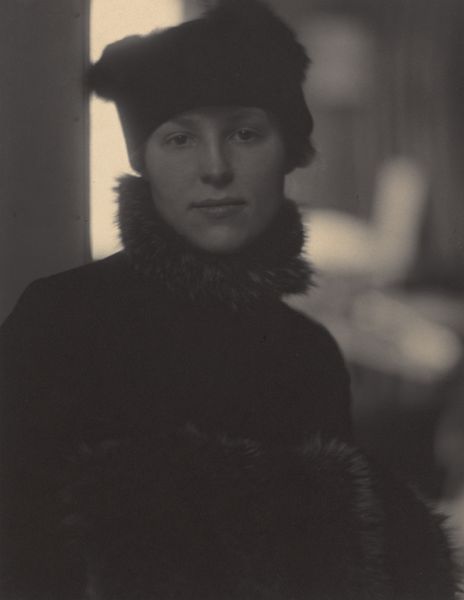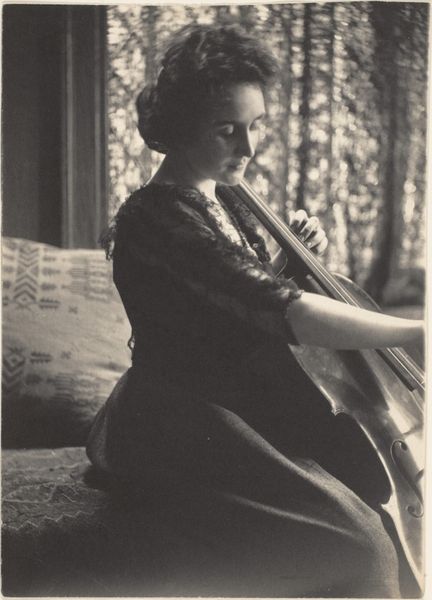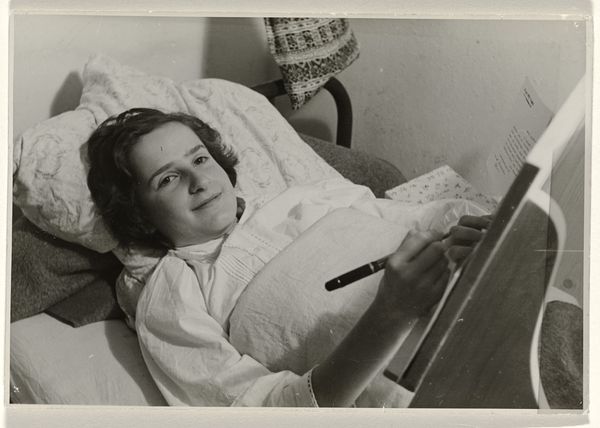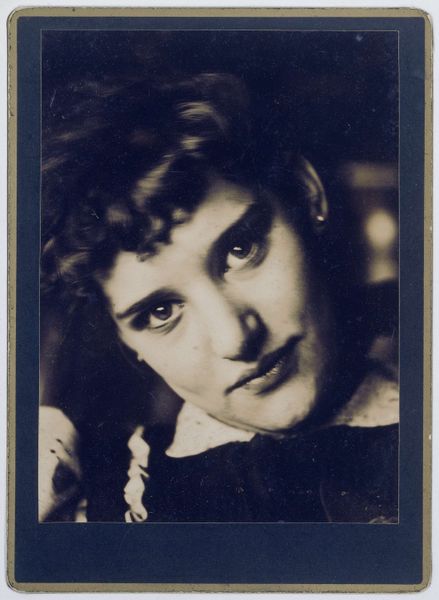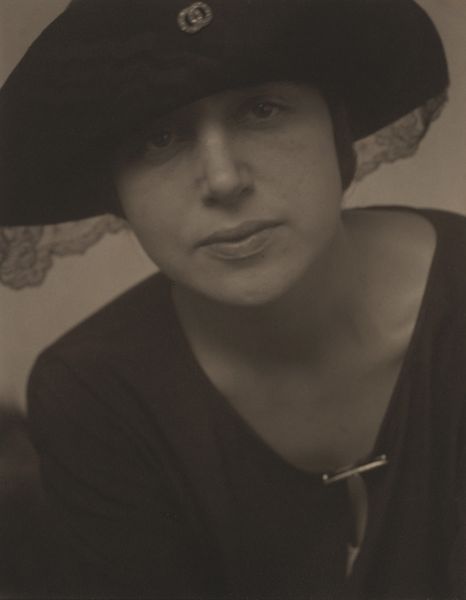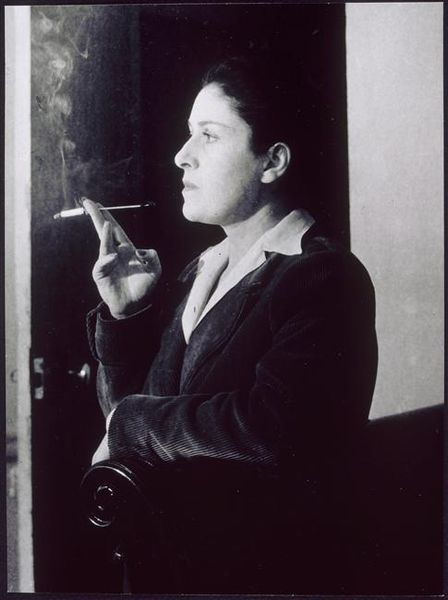
photography, gelatin-silver-print
#
portrait
#
photography
#
historical photography
#
single portrait
#
gelatin-silver-print
#
modernism
#
portrait photography
#
realism
Dimensions: sheet (trimmed to image): 10.3 × 8.9 cm (4 1/16 × 3 1/2 in.) mount: 35 × 27.5 cm (13 3/4 × 10 13/16 in.)
Copyright: National Gallery of Art: CC0 1.0
Curator: Here we have Alfred Stieglitz's portrait of Dorothy Norman, captured in 1931. A gelatin-silver print, it offers a study in modernist aesthetics. Editor: There's a quiet intensity to this photograph. The subject's gaze feels both vulnerable and direct, framed as she is by that dark, ornate table. Almost melancholic. Curator: Notice how Stieglitz has composed the shot, favoring sharp lines and textures. The contrast between Norman’s skin and the lacquered surface is carefully balanced. The shallow depth of field draws the viewer’s eye to the subject’s face, making it the focal point of the composition. Editor: And what does it mean that the figure is partially hidden, cut off? In what ways might this composition symbolize the limitations imposed on women, even those as liberated and accomplished as Norman, at the time? Norman herself was a force—a writer, photographer, and social activist—but here, she seems almost...constrained. Curator: Perhaps. Or is it Stieglitz's means of highlighting her interiority? There’s an emotional rawness in her gaze that speaks volumes about the sitter's psyche, quite beyond societal constraints. Note too how Stieglitz utilizes light to create emphasis—the chiaroscuro effect intensifies her expressiveness. Editor: The technical mastery is undeniable, yes. However, I think we have to remember Norman’s own agency and the choices she made to partner with and eventually separate from Stieglitz as well. How can this be seen as a visual metaphor for a woman grappling with and eventually transcending her role in the photographer's narrative? The history embedded in that fraught professional and personal relationship must not be overlooked. Curator: It is certainly one way of reading it, yes. The ambiguity within such a composition grants way to endless possibilities, no? Editor: Precisely. Hopefully our visitors consider the many layered dimensions within this artwork.
Comments
No comments
Be the first to comment and join the conversation on the ultimate creative platform.

